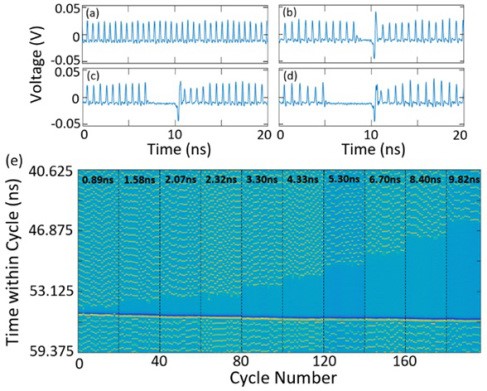Neuromorphic Photonics Research at the Institute of Photonics highlighted in Laser Focus World
Recent research in Dr Antonio Hurtado’s group at Strathclyde’s Institute of Photonics (a division of the Department of Physics) in artificial photonic neurons has been highlighted in an article in the latest issue of the magazine Laser Focus World (LFW, Vol. 53, No. 7, pp. 12, 2017). The article, included in the ‘World News’ section of the publication can be accessed independently or also read online in the magazine.
This article highlights recent work by Dr Hurtado’s group on the use of Vertical-Cavity Surface Emitting Lasers (VCSELs) for ultrafast photonic neuronal models. In particular, it reviews a recent scientific paper (J. Robertson et al, Optics Letters, Vol. 42, No. 8, pp. 1560, 2017) by his group at Strathclyde describing a novel all-optical VCSEL-based inhibitory neuronal model able to operate at sub-nanosecond speeds and with low-input power requirements. Selected experimental data from that work illustrating the inhibition of photonic spiking dynamics with sub-ns speed resolution can be seen in the figure below. The article in Laser Focus World also collects the views by Dr Hurtado and other researchers in the emerging field of neuromorphic photonics on the prospects of this technology for the future development of ultrafast photonic neuronal networks, inspired by the brain’s powerful computational capabilities, for novel non-traditional information processing systems.

Fig. Time traces (a-d) and temporal map (e) demonstrating ultrafast photonic spiking inhibition in a VCSEL. [Extracted from: J. Robertson, T. Deng, J. Javaloyes, A. Hurtado, “Controlled inhibition of spiking dynamics in VCSELs for neuromorphic photonics: theory and experiments,” Opt. Lett. 42, 1560-1563 (2017)].
August 2017